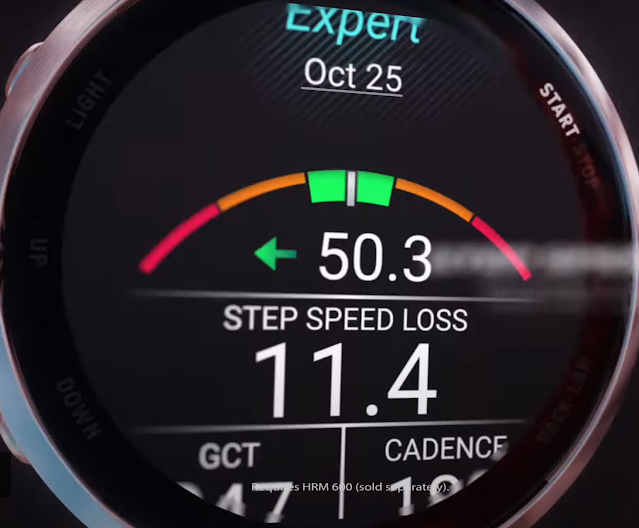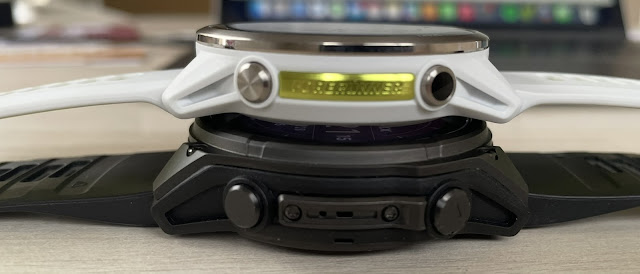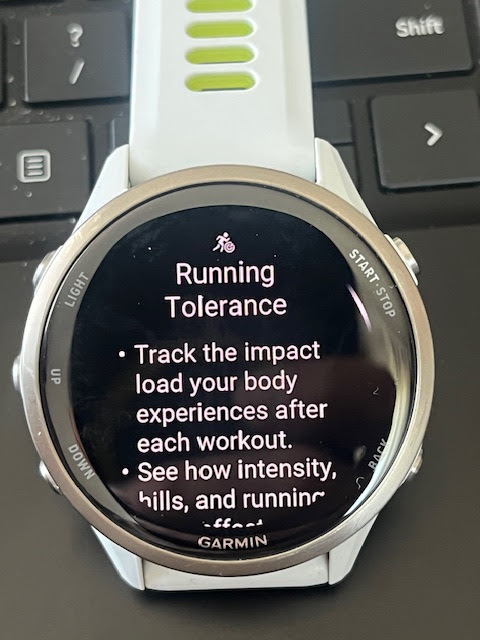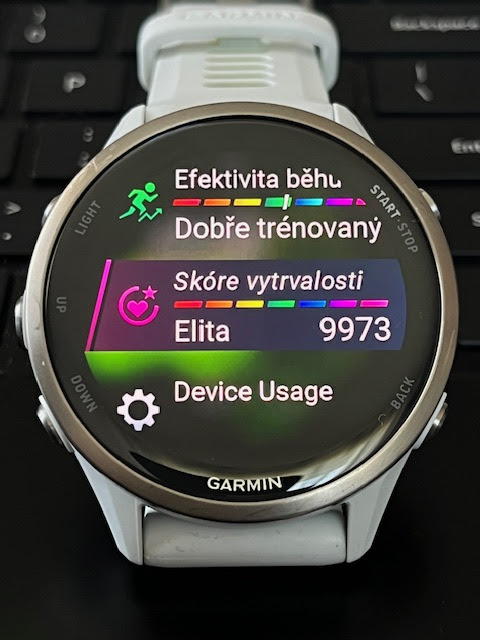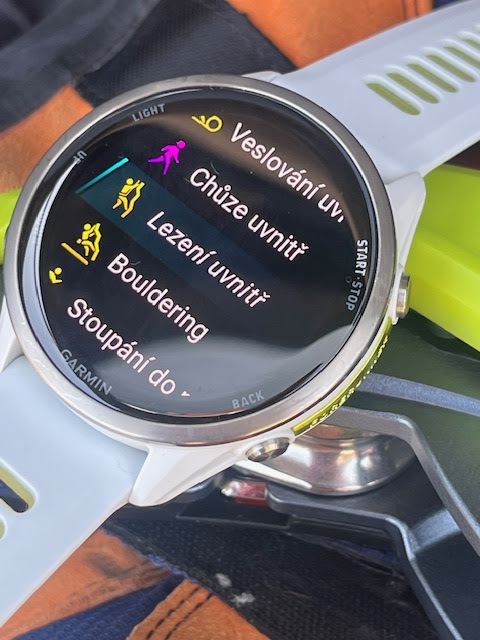Design

The only jarring design element might be the neon green metal plate with the "Forerunner" label on the dark version. It’s supposed to be a subtle watch, yet also a top-tier racing model—so elegance clashes a bit with a loud “here I am!” vibe. :)

There’s also the classic white version with bold green accents, and for the first time, a premium sports model in a “feminine” colorway: lavender-blue strap with a champagne bezel. This is the only version with a blue embossed "Forerunner" label.
The biggest change—though barely visible—is the material of the glass: the Forerunner 970 now features sapphire crystal. Olé! Readability isn’t affected at all, and if I hadn’t told you, you probably wouldn’t notice it’s sapphire.
The watch now includes the Elevate 5 heart rate sensor, which supports ECG. And most importantly—what I really missed on older models—a built-in LED light that massively improves safety during night workouts (running, cycling, ski touring, anything).
The display is still 1.4" in diameter, but visibly brighter than on the FR965. The watch size remains 47mm in diameter, 13mm thick, and weighs 56 grams—just 3 grams more than the previous model.
New Features
In addition to sapphire glass, the Forerunner 970 brings several upgrades—most (if not all) of which will likely arrive via firmware updates to the Fenix 8 series.
Hardware updates:
-
New colorway for women
-
Sapphire glass instead of Gorilla Glass
-
Elevate 5 optical heart rate sensor
-
Built-in LED light
-
Microphone and speaker for hands-free and voice features
Software updates:
-
New menu (similar to Fenix 8 UI)
-
Running tolerance metric
-
Step speed loss and impact load tracking
-
ECG (enabled by the new hardware)
-
Triathlon training plans
-
Supplemental strength workouts for runners (already in current Garmin series)
Triathlon Training Plans
Running Economy, Speed Loss, Running Tolerance
The Forerunner 970 introduces new metrics, based on data collected by the watch. Some require the new HRM-600 chest strap, released alongside the FR970.
Metrics like "running economy" analyze your running form and can tell you things like: you ran 17 km, but had you not “braked” on landing, you could’ve run 20 km in the same time. Which is a great feature… if you're OK with the watch telling you “nice effort, but you could’ve gone 3 km farther if you weren’t such a rookie.” :)
Running tolerance tracks your training volume and guides you to increase it gradually—minimizing injury and overtraining risk. But it only works if you actually follow the guidance.
It’s worth noting: training load is based on cardiovascular effort. Currently, no device can track muscular strain precisely. You might argue that HRV reflects muscular load—and yes, to an extent, it does—but it can’t tell you which muscle groups are affected (for targeted training adaptations).
Real-World Use & Summary
The watch has impressive battery life. In real-world use: with always-on display and GPS Autoselect, it consumes 3.49% battery per hour—excellent for such high settings.

You can feel the watch on your wrist, but it’s comfortable and doesn’t bounce around. It stays put—even on a slimmer wrist—just as you’d expect from a high-end sports watch.
The only thing it lacks vs. the Fenix line is diving support, which most traditional athletes won’t miss.
Although I’ve recently preferred the Instinct 3 or Fenix 8, I’m happy to return to the Forerunner series—it now has everything I want: compact size, titanium bezel, top sensors, accurate tracking, LED light. It supports all the sports I need and stays elegant and lightweight.
This feels like the best watch Garmin has made in a long time—and the addition of sapphire glass (for the first time in the Forerunner line) truly elevates it above other models.
The Forerunner 970 has become a luxury item—perhaps unfortunately (due to its price), but perhaps fortunately too: it offers real value and extended longevity.
Special thanks to Runlab Kobras (partner of this web) for the collaboration. Product link: https://runlab.kobras.cz/sport/sporttestery-garmin-866/forerunner-970
Gallery:









